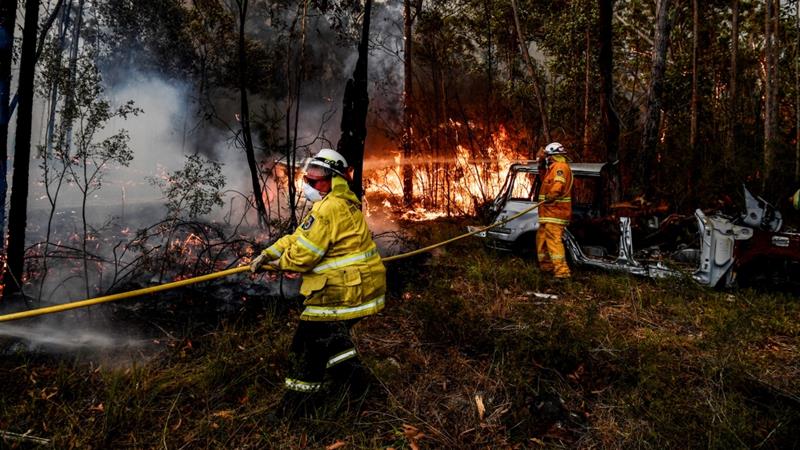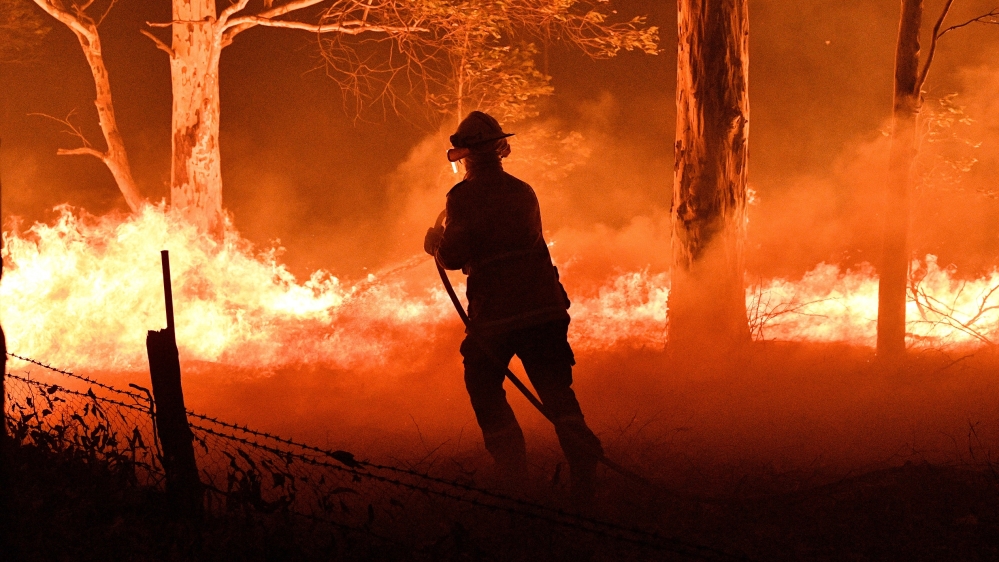Thousands of people, including many tourists, fled Australia's wildfire-ravaged eastern coast on Thursday in the face of worsening conditions as the military started to evacuate people trapped on the shore further south.
Cooler weather since Tuesday has aided firefighting and allowed people to replenish supplies.
Vehicles formed long lines at gas stations and supermarkets, and traffic was gridlocked as highways reopened.
But fire conditions were expected to deteriorate on Saturday as high temperatures and strong winds return.
"There is every potential that the conditions on Saturday will be as bad or worse than we saw (on Tuesday)," New South Wales Rural Fire Service Deputy Commissioner Rob Rogers said.
Authorities said at least 381 homes had been destroyed on the New South Wales southern coast this week.
On Wednesday, it was also reported that the death toll in the bushfires had reached 12 since the fires broke out.
New South Wales mass relocation
Reports say there are more than 200 fires currently burning in the country's two most-populous states.
New South Wales authorities ordered tourists on Thursday morning to leave a 250-kilometre (155 miles) zone along the picturesque south coast.
State Transport Minister Andrew Constance said it is the "largest mass relocation of people out of the region that we've ever seen."
In Victoria, where 68 homes have burned this week, the military was helping thousands of people who fled to the shore as a wildfire threatened their homes on Tuesday in the coastal town of Mallacoota.
Food, water, fuel and medical expertise were being delivered and about 500 people were going to be evacuated from the town by a naval ship.
"We think around 3,000 tourists and 1,000 locals are there. Not all of those will want to leave, not all can get on the vessel at one time," Victoria Premier Daniel Andrews told the Australian Broadcasting Corporation.
The early and devastating start to Australia's summer wildfires has led authorities to rate this season the worst on record.
About five million hectares (12.35 million acres) of land have burned, with at least 17 people dead and more than 1,300 homes destroyed.
Prime Minster Scott Morrison said the crisis was likely to last for months.
"It (fires) will continue to go on until we can get some decent rain that can deal with some of the fires that have been burning for many, many months," Morrison told reporters on Thursday.
Smoke from the wildfires caused the air quality in the national capital, Canberra, to be the world's worst and was blowing into New Zealand thousands of kilometres away.
The acrid-smelling smoke first appeared in the country early Wednesday when in many areas the sun appeared as either a red or golden orb, depending on the thickness of the haze.
"Smoke which has travelled around 2,000km across the Tasman Sea can clearly be seen," New Zealand's official forecaster MetService tweeted.
"Visibility in the smoke haze is as low as 10km in the worst affected areas."
SOURCE: AP news agency




